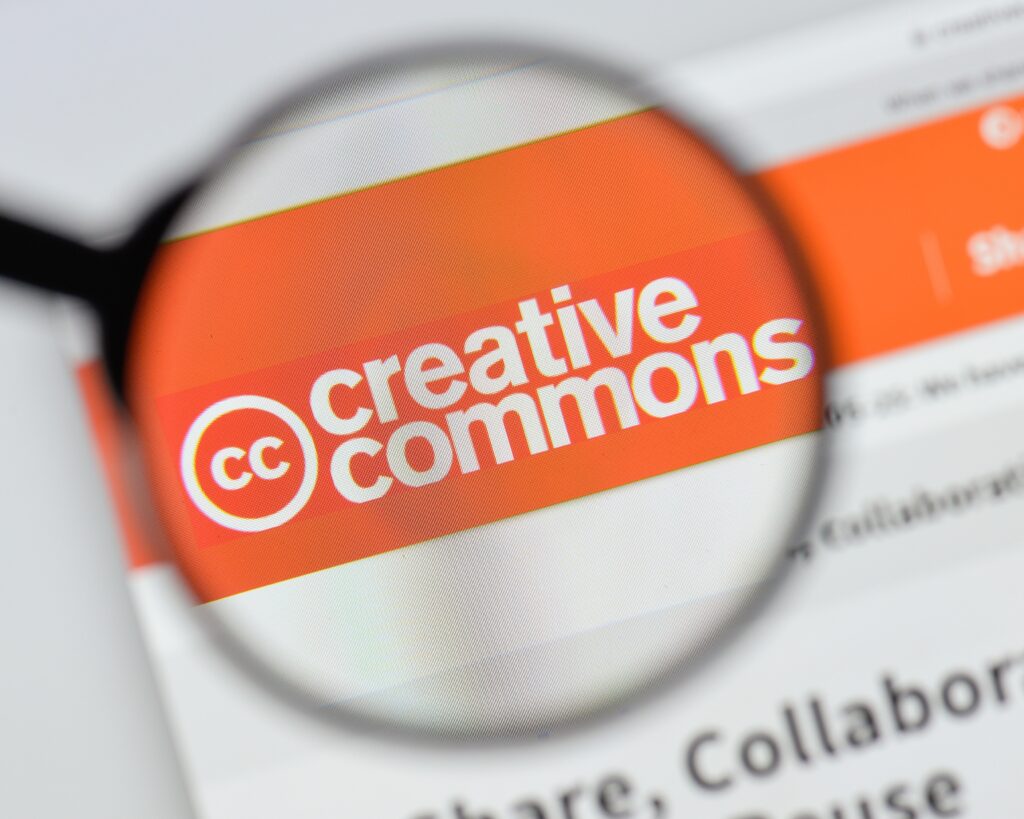What Should You Be Aware of When Dealing with Works Noted as Creative Commons?

One type of copyright license is the “Creative Commons License”. You may have seen a “cc” mark attached to various image materials on the web. These licenses, in a sense, aim to enhance the usability of copyrighted works, similar to open-source software (OSS). However, there are legal issues that can arise from misunderstandings such as “you can use it as you like without worrying about copyright issues”.
In this article, we will clarify the legal implications of the Creative Commons License and explain the points to be aware of when using copyrighted works with this mark attached.
What is Creative Commons?

Creative Commons refers to a series of movements aimed at expanding content that can be widely utilized by people other than the copyright holder, similar to open-source software (OSS), and stimulating creative activities in society and communities as a whole. Creative Commons is an international organization based in the United States, and the Creative Commons License is provided as an international rule for expressing intentions regarding copyright.
It is important to note when understanding Creative Commons that it targets content such as music, images, and videos, not software or source code. Also, the Creative Commons License was created with the intention of making content available to a wide range of people, but at the same time, it was designed to reduce the complexity and difficulty of understanding license agreements.
For example, when posting your work on the web, if you attach the Creative Commons License mark, the creator can grant permission for use to an unspecified number of people without relinquishing their copyright, and can spread their work on the web. Conversely, from the perspective of someone who does not hold copyright, this system allows them to easily distinguish what is permitted and what is not just by seeing this mark.
Thus, the Creative Commons License has a great appeal to creators because it has both the tolerance to widely accept the use by people other than the copyright holder and the ease of understanding the meaning of the license. However, no matter how tolerant and easy to understand it is, it is necessary to know how to view the mark and its meaning.
Types and Interpretation of Creative Commons Marks
Below, we explain the types of marks and how to interpret them. From the perspective of those expressing their intentions regarding licenses, the merit of Creative Commons licenses lies in the variations that arise from combining the following four types of notation. As long as you understand the meaning of these four types of marks, you can express a variety of intentions through their combinations.
BY (Attribution)
This mark means that when using a work to which this mark is attached, you must display information related to the work, such as the creator’s name and title, along with the work itself.
NC (Non-Commercial)
This mark means that when using a work to which this mark is attached, you must not use it for commercial purposes. (If you wish to use it for commercial purposes, you must obtain separate permission from the rights holder of the work, and if you obtain permission, you no longer need to attach this mark.)
ND (No Derivatives)
This mark means that when using a work to which this mark is attached, you must use all or part of the work as it is, without making any modifications.
SA (Share Alike)
This mark means that when using a work to which this mark is attached, you must attach the same license to the new work, even if you have modified the original work.
Important Points Regarding Creative Commons Licenses

The following are additional points necessary for a precise understanding of Creative Commons Licenses.
Creative Commons itself does not have legal enforcement power
Please note that Creative Commons is merely a non-profit organization based in the United States, and legally, this organization itself does not have any authority.
However, the decision on how to license one’s own work is up to the copyright holder (usually the same as the creator). Therefore, if you deliberately ignore the meaning of these marks and use them, you will ultimately trample on the rights holder’s intentions. As a result, if the other party takes legal action, you will be dealt with according to the laws of each country.
Civil liability is imposed for copyright infringement
Ignoring the content of the mark and using it can lead to copyright infringement. Copyright infringement is a matter of civil liability, so you will not be arrested or penalized for this infringement. However, it is possible to be pursued for civil liability such as tort liability, and it is entirely possible that damages may be ordered. Also, a request for injunction may be made based on copyright law, and this can be a fatal blow to business depending on the situation.
What can be understood from the license mark is only the intention of the copyright holder
Also, even if you understand the meaning of the license mark and use it accordingly, please note that what can be read from the mark is only the intention of the copyright holder. In other words, you cannot tell from these marks alone whether there were any other legal issues involved besides the license.
For example, if the content with a Creative Commons License itself infringes on the rights of a third party, that third party may file a claim, and legal action may be taken against the person who trusted the mark and used it. As an example, consider a case where a photo taken by someone infringes on the portrait rights of a person who happened to be in the photo. The fact that a mark is attached does not necessarily eliminate all concerns about such matters. For more details on portrait rights, please refer to the following article.
https://monolith.law/reputation/portraitrights-onthe-internet[ja]
Summary
The Creative Commons License offers many attractions for creators who want to focus on their work, such as promoting free creative activities and simplifying the often complicated issues surrounding licenses. However, if the image of “free to use and no complicated legal talk” takes precedence, it can easily lead to issues under copyright law.
The Creative Commons License mark is also a tool that very succinctly and clearly organizes the issues surrounding copyright law licenses. Understanding and accurately interpreting this perspective can be the first step towards deepening your understanding of legal issues related to licenses.
Category: IT
Tag: ITSystem Development





















